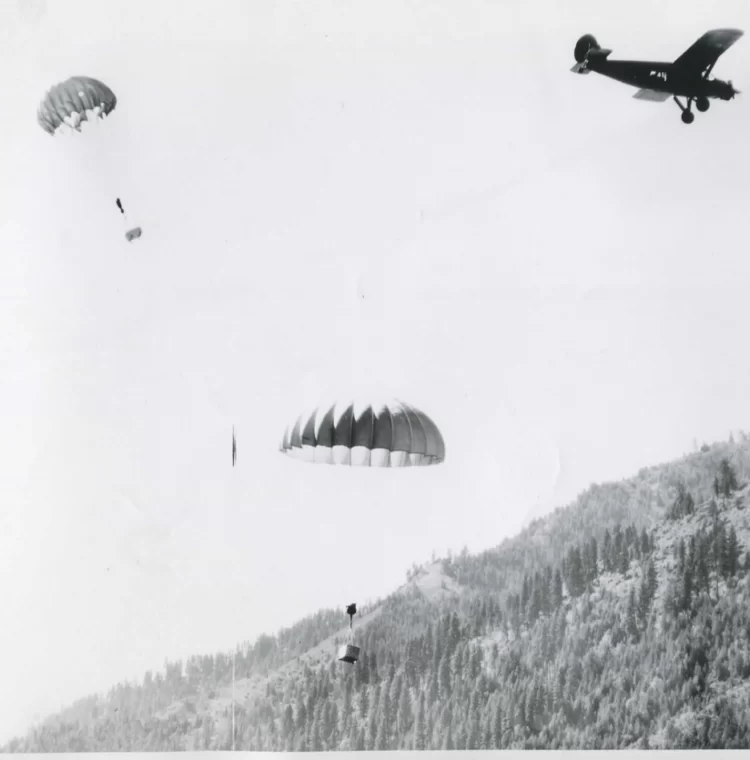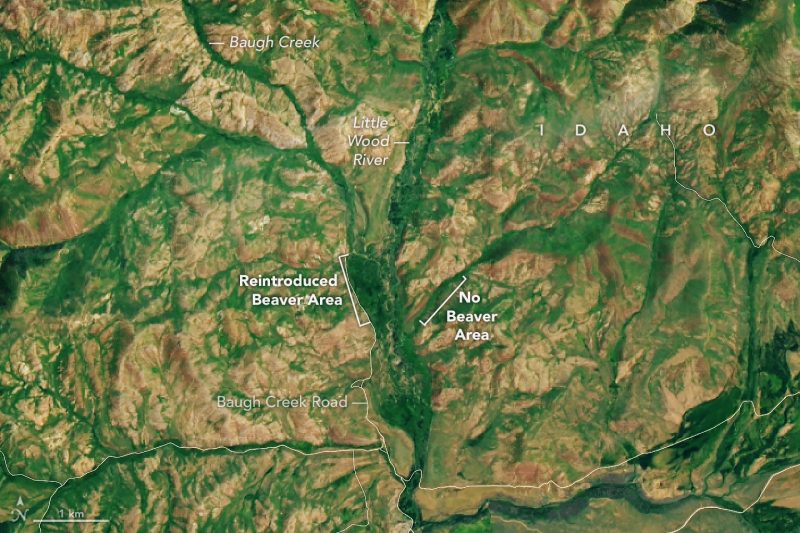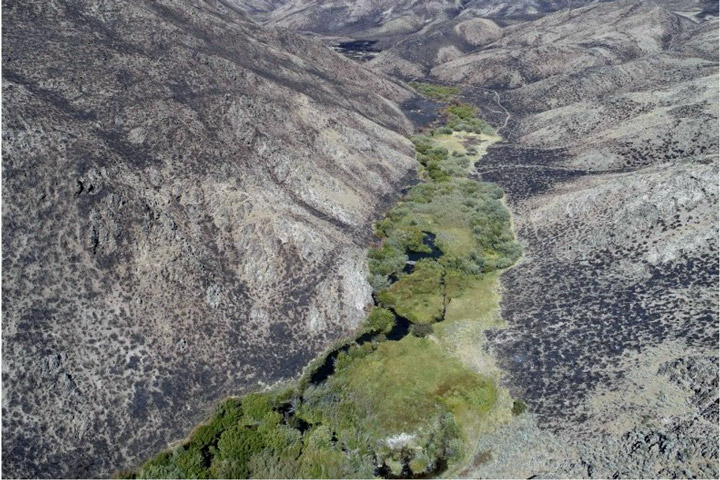Watch this video to learn how parachuting beavers created a fire-resistant wetland.
How beavers benefit the ecosystem
Some people have a negative view of beavers: they tear down trees and build dams that can flood the adjacent landscape. In Idaho in the 1940s, officials rounded up beavers from populated areas and relocated them – sometimes by parachute – to remote areas such as Baugh Creek. Now, nearly 70 years later, NASA satellite images show that these areas where beavers settled are lusher, greener, and more resistant to fire and drought.
Parachuting beavers
Some of the areas that Idaho wanted to relocate the beavers to were so remote that there were no roads to get them there. So, they came up with a novel solution. Idaho Fish and Game used surplus parachutes from World War II to drop the beavers into their new homes.
At first, the fish and game people figured they could drop the beavers in woven willow boxes. Then the beavers could chew themselves to freedom upon landing. But as soon as they put the beavers in the boxes, they began to chew their way out. And they didn’t want a plane full of loose beavers. Instead, Idaho Fish and Game designed a box that would open upon impact. They tested the box’s design on one eager beaver they aptly named Geronimo. After several test drops onto a field, they were assured that the design would work.
Thus, beavers rained down over Idaho. The beaver relocation project lasted until 1948. Those beavers’ descendants now live in what is part of the largest protected roadless forest in the lower 48 states.

Satellite evidence of lusher lands
In the Baugh Creek area of Idaho southeast of Sun Valley, the positive impact that beavers have had on the ecosystem is visible from space. The beavers there have been busy as … well, beavers … creating dams and flooding the surrounding landscape. When you compare an area of the creek where beavers made their homes compared to a nearby creek without beavers, the difference is clear. The beaver areas are more verdant, with wider swaths of plant life.

Trial by fire
Then, in 2018, the Sharps Fire burned more than 60,000 acres in the Baugh Creek area. But imagery from after the fire showed that the lush, moist areas around beaver dams were resilient against the flames.
Now NASA is working with researchers who are attempting to restore beavers in ecosystems throughout the West. You can learn more about their work in this video.
Maybe someday soon beavers will be parachuting into an area near you to help restore the ecosystem.

Bottom line: NASA satellite imagery showed that a creek in Idaho where beavers built dams was lusher, greener, and more fire-resistant than neighboring areas without beaver dams.
Read more: Why super-sized beavers went extinct
The post Parachuting beavers created a fire-resistant wetland first appeared on EarthSky.
from EarthSky https://ift.tt/ngzpTEM
Watch this video to learn how parachuting beavers created a fire-resistant wetland.
How beavers benefit the ecosystem
Some people have a negative view of beavers: they tear down trees and build dams that can flood the adjacent landscape. In Idaho in the 1940s, officials rounded up beavers from populated areas and relocated them – sometimes by parachute – to remote areas such as Baugh Creek. Now, nearly 70 years later, NASA satellite images show that these areas where beavers settled are lusher, greener, and more resistant to fire and drought.
Parachuting beavers
Some of the areas that Idaho wanted to relocate the beavers to were so remote that there were no roads to get them there. So, they came up with a novel solution. Idaho Fish and Game used surplus parachutes from World War II to drop the beavers into their new homes.
At first, the fish and game people figured they could drop the beavers in woven willow boxes. Then the beavers could chew themselves to freedom upon landing. But as soon as they put the beavers in the boxes, they began to chew their way out. And they didn’t want a plane full of loose beavers. Instead, Idaho Fish and Game designed a box that would open upon impact. They tested the box’s design on one eager beaver they aptly named Geronimo. After several test drops onto a field, they were assured that the design would work.
Thus, beavers rained down over Idaho. The beaver relocation project lasted until 1948. Those beavers’ descendants now live in what is part of the largest protected roadless forest in the lower 48 states.

Satellite evidence of lusher lands
In the Baugh Creek area of Idaho southeast of Sun Valley, the positive impact that beavers have had on the ecosystem is visible from space. The beavers there have been busy as … well, beavers … creating dams and flooding the surrounding landscape. When you compare an area of the creek where beavers made their homes compared to a nearby creek without beavers, the difference is clear. The beaver areas are more verdant, with wider swaths of plant life.

Trial by fire
Then, in 2018, the Sharps Fire burned more than 60,000 acres in the Baugh Creek area. But imagery from after the fire showed that the lush, moist areas around beaver dams were resilient against the flames.
Now NASA is working with researchers who are attempting to restore beavers in ecosystems throughout the West. You can learn more about their work in this video.
Maybe someday soon beavers will be parachuting into an area near you to help restore the ecosystem.

Bottom line: NASA satellite imagery showed that a creek in Idaho where beavers built dams was lusher, greener, and more fire-resistant than neighboring areas without beaver dams.
Read more: Why super-sized beavers went extinct
The post Parachuting beavers created a fire-resistant wetland first appeared on EarthSky.
from EarthSky https://ift.tt/ngzpTEM

Aucun commentaire:
Enregistrer un commentaire